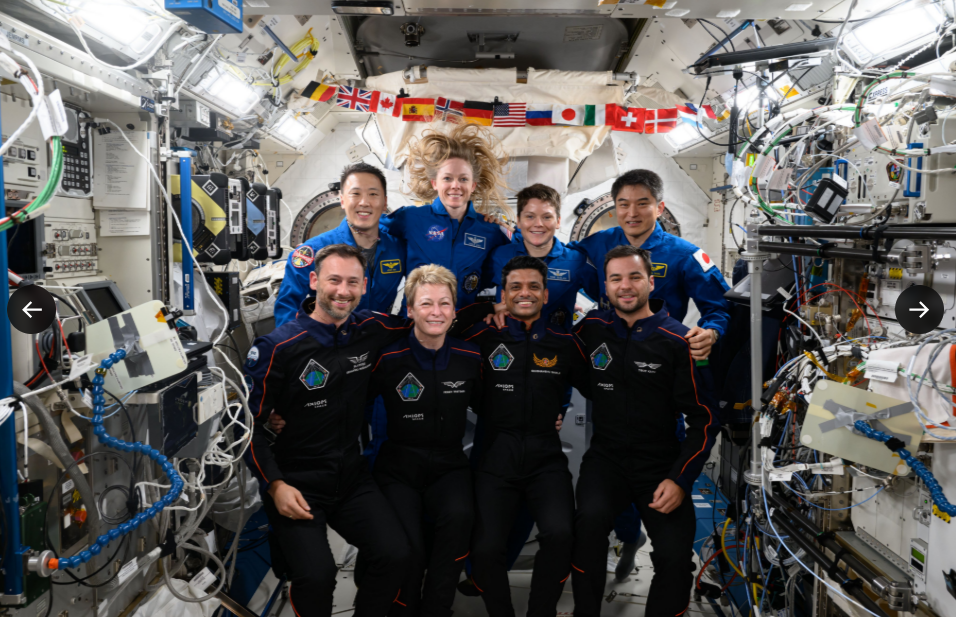Indian astronaut Shubhanshu Shukla is all set to return to Earth after an 18-day mission aboard the International Space Station (ISS), where he represented not just scientific progress but also national pride. His journey marks a historic milestone as he becomes the first Indian to set foot on the ISS and only the second Indian to travel into space after Rakesh Sharma in 1984. As he prepares for re-entry into Earth’s atmosphere, his experiences, contributions, and scientific efforts aboard the orbiting laboratory are expected to benefit India’s upcoming space missions, especially the ambitious Gaganyaan program.
What was Shubhanshu Shukla doing in space?
During his stay on the ISS, Shubhanshu Shukla participated in more than 60 scientific experiments in collaboration with NASA and Axiom Space. These experiments spanned a wide range of disciplines including life sciences, technology, mental performance, and space medicine. One of the most significant projects he worked on involved microalgae — a potential future source of food, oxygen, and biofuel for long-duration space missions. Microalgae’s resilience in space conditions makes it a promising candidate for sustaining life during extended missions, such as journeys to Mars.
In addition to this, Shukla was involved in cognitive and neurological studies. He took part in the ‘Voyager Display’ experiment, which monitored eye movements to better understand visual coordination in microgravity. The ‘Cerebral Blood Flow’ study analyzed how changes in gravity and elevated carbon dioxide levels in space affect brain blood flow and heart function. This research can help protect astronauts during spaceflight and also provide medical insights back on Earth.
Another vital aspect of his mission included the use of the ‘Rad Nano Dosimeter’, a compact radiation monitoring device that evaluated the exposure levels of astronauts in space. This is crucial for planning safer missions. Shukla also contributed to the ‘Acquired Equivalence Test’, a psychological experiment that assesses learning adaptability and cognitive behavior in microgravity. Through the ‘PhotonGrav Study’, brain activity data was collected to support the development of neuroadaptive technologies for space and medical applications.
How does India look from space?
One of the most heartfelt moments from the mission came during Shukla’s farewell speech from the ISS. Quoting the legendary astronaut Rakesh Sharma, he remarked that “India still looks Sare Jahan Se Achha (better than the entire world).” He added his own perspective, saying that today’s India looks fearless, ambitious, confident, and proud — qualities that reflect the country’s growing stature in global space exploration. His words resonated not only with the ISS crew but also with millions of Indians following the mission from Earth.
When did the mission begin and when will they return?
The Axiom-4 mission launched from Florida on June 25, with a crew consisting of Commander Peggy Whitson, Pilot Shubhanshu Shukla, and Mission Specialists Slawosz Uznanski-Wizniewski and Tibor Kapu. The crew docked with the ISS on June 26. After completing their mission, the team is scheduled to depart the space station at 4:35 PM IST on Monday. They will return aboard SpaceX’s Dragon spacecraft and are expected to splash down near the coast of California around 3:00 PM IST on Tuesday.
Upon landing, all astronauts will enter a seven-day rehabilitation program. This is a standard procedure for astronauts who spend time in microgravity, as the body needs time to readjust to Earth’s gravity, especially in terms of muscle strength, balance, and cardiovascular stability.
How is this mission useful for India?
Shukla’s mission is more than just a personal achievement — it is a major step for India’s space aspirations. The Indian Space Research Organisation (ISRO) invested approximately ₹550 crore in this mission. The experience and data gained through Shukla’s participation will play a critical role in shaping the future of India’s first manned space mission, Gaganyaan, scheduled for 2027. This mission gave ISRO an opportunity to understand space mission logistics, crew dynamics, and the integration of scientific payloads in a real-world scenario.
What is Shukla bringing back with him?
The Dragon spacecraft is carrying more than 580 pounds (about 263 kg) of cargo back to Earth. This includes NASA hardware, experimental samples, and vast amounts of scientific data collected during the mission. These materials will be analyzed to improve our understanding of human health in space and to develop technologies that can benefit life on Earth, especially in healthcare and environmental science.
What was the emotional side of this mission?
The mission was not just about science and technology; it also carried a deep emotional weight. During the farewell ceremony aboard the ISS, many crew members were seen holding back tears. Shukla spoke about the bonds formed with the Expedition 73 team, stating he had never imagined building such strong relationships in just 18 days. His words were a testament to the human connection that thrives even in the harsh, isolated environment of space.
As Shubhanshu Shukla returns, he brings with him not only invaluable data and scientific insight but also a renewed sense of inspiration for India. His journey marks a new chapter in the country’s space history — one filled with promise, determination, and a clearer vision for the stars.








